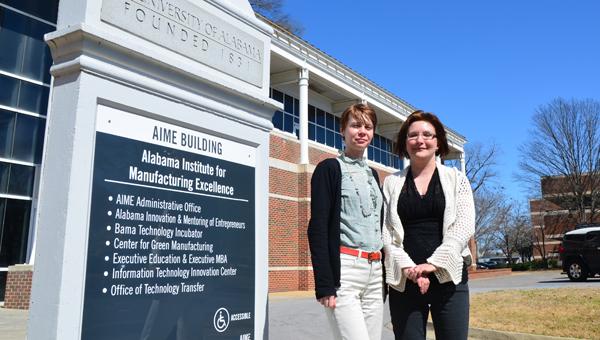“The goal is to design a technology that will allow the extraction of uranium from seawater and adding the ocean as an additional uranium resource,” Julie Shamshina, chief technology officer at 525 Solutions, which recently received nearly $1.5 million in grant funding from the U.S. Department of Energy.
Oceanic uranium extraction currently relies on plastics, which are costly and potentially harmful to the environment. 525 Solutions, building on research from UA Center for Green Manufacturing Director Robin Rogers, has focused on working with chitin to extract uranium. To do so, they had to create chitin, a material found in crab and lobster shells, in a new way.
“Chitin is a marine biopolymer. It came from the ocean, and nature knows how to deal with it,” Rogers said. “The process we have developed allows for the isolation of purified chitin with high molecular weight directly from crustacean shells, with no need for extensive and harsh conditions that are currently used elsewhere.”
Rogers founded 525 Solutions in 2004 with Daniel Daly and Larry Canada, with intentions to investigate newly developed laboratory technologies. It has since taken a turn toward green chemistry.
In 2012, they were awarded a National Science Foundation grant for work on chitin-based wound care technology.
“525 nanometers is a wavelength of green light,” CEO and chemist Gabriela Gurau said. “The name reflects both ‘green technologies’ and ‘green manufacturing.’”
Gurau, Rogers and Shamshina are all authors on patents associated with the project, which received Phase II funding from the federal Small Business Innovation Research program after demonstrating the technology was valid, working and feasible.
“As usual, most money will go toward research needs. We will need larger equipment, chemicals and supplies,” Gurau said. “Some money will go toward consulting fees. We are chemists, and will need a help of an engineer and an economist. Some will go to our own salary.”
The technology developed by 525 Solutions uses ionic liquids to extract chitin from waste, like shrimp and crab shells. Rogers had previously researched the effect of ionic liquids on cellulose and wood.
“The results have been promising, and the work has continued with other biomass on other biopolymers,” she said. “Chitin is the second most abundant biopolymer on earth after cellulose, and ionic liquids are also useful for dissolving and processing chitin.”
The product they obtained avoids the harsh conditions often needed for oceanic uranium extraction and has long chains, so is strong enough to be applied where traditionally obtained material cannot. In their application for the grant, the team emphasized that chitin could be a cheap and biodegradable absorbent material.
Shamshina said universities often have the best equipment and infrastructure for conducing research and focus on fundamental problems with the intention of producing a journal article, not commercialization.
“We are actually lucky,” Gurau said. “525 is located in UA’s Alabama Innovation and Mentoring of Entrepreneurs Building, which is designed for companies like ours. It is a research center for budding entrepreneurs.”
Developing commercially viable products motivated the team to rent space at AIME.
“Having a company essentially located in the middle of the University settings helps a lot,” Gurau said.
Gurau and Shamshina both earned their doctorates at the University, going through postdoctoral training and eventually working as scientists at the Capstone.
“For myself, I can say that whatever I know now, and my education and development as a scientist, happened at and because of [the University],” Shamshina said.









